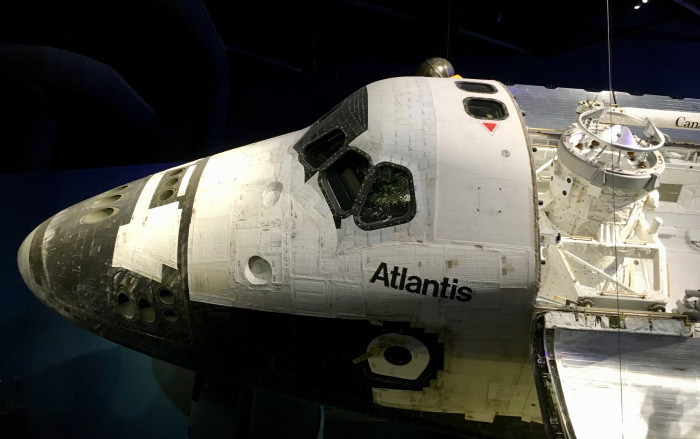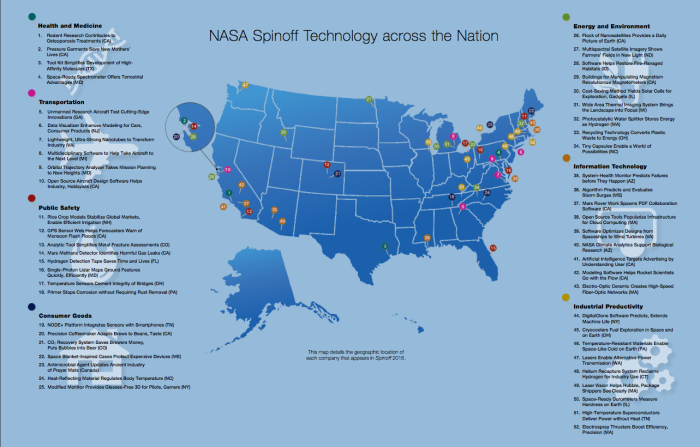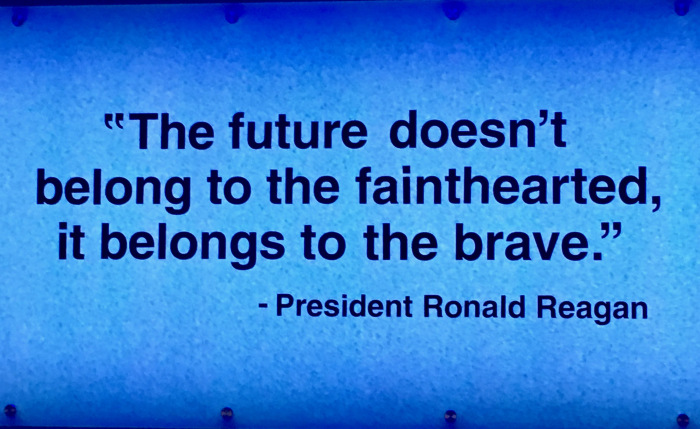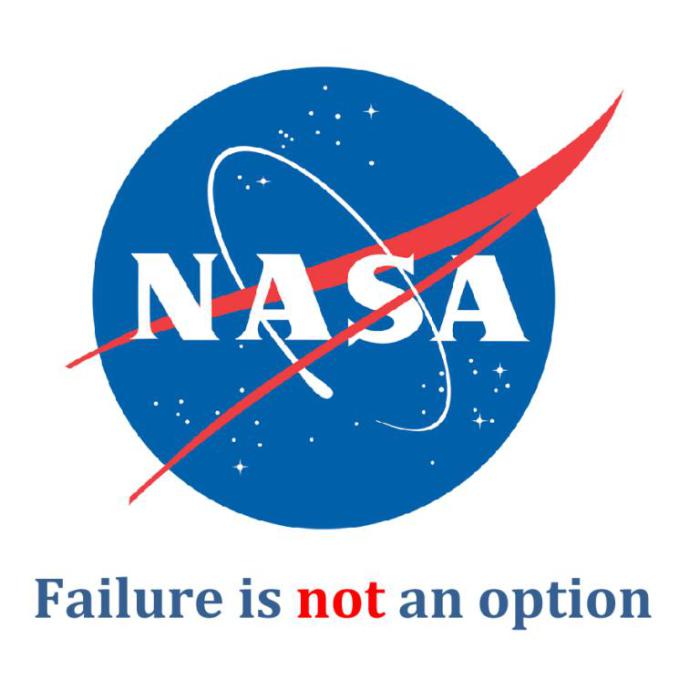
Robohub.org
NASA spinoffs: Bringing space down to Earth

In a time of “America First,” the benefits of space travel are clouded by the smoke of hyperbole. In reality, there has been over 2,000 inventions courtesy of NASA that are making our lives better here on Earth. Every day, we benefit as much from the journey as from the destination. These innovations include new medicines developed in zero gravity; faster autonomous transportation technologies; and groundbreaking advances in computing (launched above the clouds). The map below illustrates the number of commercial endeavors that have spun out of the nation’s space program since 1976:

NASA has been an incubator of technology since its inception in 1959. This year, NASA unveiled a new web page illustrating its reach into the design of new smart cities and IoT connected homes, called NASA City. This addition to the already extensive NASA site comes on the heels of President Trump’s proposed budget cut of NASA’s funding that would end earth-centric education and innovations, including protecting the planet from an apocalyptic asteroid.
According to the President’s outline, “the budget increases cooperation with industry through the use of public-private partnerships, focuses on the nation’s efforts on deep space exploration rather than Earth-centric research, and develops technologies that would achieve U.S. space goals and benefit the economy.”

This past week, I visited the Kennedy Space Center to learn firsthand how our lives have been positively changed by the sacrifices of the brave men and women who risked everything for humanity. As a small testimony to these lives lost in the pursuit of science, I have included below a list from NASA’s website of the top innovations we use every day
Health & Medicine
- LED (Light-Emitting Diodes) Lighting – The LED technology used in space shuttle plant growth experiments has contributed to the development of medical devices to relive “minor muscle and joint pain, arthritis, stiffness, and muscle spasms, and also promotes muscle relaxation and increases local blood circulation.” In fact, the U.S. Department of Defense uses LEDs now as a “soldier self-care” system to treat minor injuries and pain and to improve endurance in combat.
- Infrared Ear Thermometers – NASA developed this thermometer using “infrared astronomy technology to measure the amount of energy emitted by the eardrum, the same way the temperature of stars and planets are measured.”
- Artificial Limbs – NASA’s space robotic and extravehicular activities have now been applied to create more “functionally dynamic artificial limbs.” Additionally, temper foam was developed by NASA which prevents friction between the skin and the prosthetic.
- Ventricular Assist Device – The ventricular assist device (VAD) functions as a “bridge to heart transplant” by pumping blood throughout the body to keep critically ill patients alive until a donor heart is available. “Weighing less than 4 ounces and measuring 1 by 3 inches, the pump is approximately one-tenth the size of other currently marketed pulsatile VADs, making it ideal for children.
Transportation
- Anti-Icing Systems – NASA scientists developed a thermoelectric deicing system called Thermawing, a DC-powered air conditioner for single-engine aircraft called Thermacool. This allows “pilots to safely fly through ice encounters and provides pilots of single-engine aircraft the heated wing technology usually reserved for larger, jet-powered craft.”
- Highway Safety – The cutting of grooves in concrete to increase traction and prevent injury was first developed for the Space Shuttle to reduce aircraft accidents on wet runways. It was later expanded into highway and pedestrian applications.
- Improved Radial Tires – “Goodyear Tire and Rubber Company developed a fibrous material, five times stronger than steel, for NASA to use in parachute shrouds to soft-land the Vikings on the Martian surface.” Goodyear later added this technology to its new radial tire to increase tread life by over 10,000 miles.
- Chemical Detection – Moisture and pH-sensitive sensors were created to warn NASA of potentially dangerous corrosive conditions in the Space Shuttle before significant structural damage occurred. This new type of sensor was later adapted by the Department of Defense for detecting chemical warfare agents and potential threats, such as toxic industrial compounds and nerve agents.
Public Safety
- Video Enhancing and Analysis Systems – Video Image Stabilization and Registration technology used by NASA in space is now in the hands of FBI agents to analyze video footage. Aside from law enforcement and security applications, the technology has also been adapted to serve military professionals for reconnaissance, weapons deployment, damage assessment, training, and mission debriefing.
- Land Mine Removal – NASA utilizes its surplus rocket fuel “to produce a flare that can safely destroy land mines,” that is able “to reduce propellant waste without negatively impacting the environment.” The flare uses solid rocket fuel to burn a hole in the mine’s case and burn away the explosive contents before it is safely disarmed.
- Fire-Resistant Reinforcement – “The Apollo heat shield was coated with a material whose purpose was to burn and thus dissipate energy during reentry while charring, to form a protective coating to block heat penetration.” Now the the heat shield coating is being used in fire-retardant paints and aircraft foams for aircraft, including a new “intumescent epoxy material” that expands when exposed to heat.
- Firefighter Gear – Firefighting equipment widely used throughout the United States is based on a NASA development that coupled Agency design expertise with lightweight materials developed for the U.S. Space Program.
Consumer, Home, & Recreation
- Temper Foam – “As the result of a program designed to develop a padding concept to improve crash protection” for the Shuttle and airplane passengers, NASA developed temper foam or “memory foam.” The material is now in most mattresses and pillows.
- Enriched Baby Food – “Commercially available infant formulas now contain a nutritional enrichment ingredient that traces its existence to NASA-sponsored research that explored the potential of algae as a recycling agent for long-duration space travel.” The ingredient can now be found in over 90% of infant formulas sold worldwide.
- Portable Cordless Vacuums – Wireless drills and other appliances were created by Black & Decker for the Apollo and Gemini space missions. “For the Apollo space mission, NASA required a portable, self-contained drill capable of extracting core samples from below the lunar surface.” This invention later led to the development of the Dustbuster.
- Freeze Drying Technology – “In planning for the long-duration Apollo missions, NASA conducted extensive research into space food. One of the techniques developed was freeze drying.” The benefits were amazing as freeze drying food kept 98% of the nutrients but weighing 80% less, which is now used to help help homebound seniors maintain a healthy diet.
Environmental & Agricultural Resources
- Harnessing Solar Energy – Solar energy was first utilized in space, and now “homes across the country are now being outfitted with modern, high-performance, low-cost, single crystal silicon solar power cells that allow them to reduce their traditional energy expenditures and contribute to pollution reduction.”
- Pollution Remediation – “A product using NASA’s microencapsulating technology is available to consumers and industry enabling them to safely and permanently clean petroleum-based pollutants from water.” This technology was recently deployed in the cleanup of catastrophic oil spills such as BP’s Deep Water Horizon and the Exxon Valdez.
- Water Purification – As part of designing a complex system of devices intended to sustain the astronauts living on the International Space Station and, in the future, those who go on to explore Mars, NASA has been turning wastewater from respiration, sweat, and urine into drinkable water for years. This technology is now available for underdeveloped countries where well water may be heavily contaminated.
Computer Technology
- Better Software – NASA is collaborating with tech companies like Google and InterSense “to solve a variety of challenging technical problems ranging from large-scale data management and massively distributed computing, to human-computer interfaces—with the ultimate goal of making the vast, scattered ocean of data more accessible and usable” both in space and on Earth.
- Structural Analysis – NASA has created thousands of computer programs over the decades to design, test, and analyze stress, vibration, and acoustical properties of a broad assortment of aerospace parts and structures (before prototyping even begins). The NASA Structural Analysis Program is now used to design everything from Cadillacs to roller coasters.
- Refrigerated Internet-Connected Wall Ovens – Everything on the International Space Station is monitored and controlled via the Internet, even the oven named “ConnectIo.” ConnectIo is unique as it enables a “user to simply enter the dinner time, and the oven automatically switches from refrigeration to the cooking cycle,” so the meal is ready when the astronaut (or Earth-bound human) is at the table.
Industrial Productivity
- Powdered Lubricants – NASA developed a solid lubricant coating material originally for its aeropropulsion engines, refrigeration compressors, turbochargers, and hybrid electrical turbogenerators. This technology is now saving industrial companies millions of dollars by improving efficiency, lowering friction, and reducing emissions in widespread industrial equipment.
- Improved Mine Safety – “An ultrasonic bolt elongation monitor developed by a NASA scientist for testing tension and high-pressure loads on bolts” is now used for a plethora of applications from the evaluation of railroad ties to groundwater analysis to radiation dosimetry to medical testing for intracranial pressure.
- Food Safety Systems – “Faced with the problem of how and what to feed an astronaut in a sealed capsule under weightless conditions while planning for human space flight, NASA enlisted the aid of The Pillsbury Company to address two principal concerns: eliminating crumbs of food that might contaminate the spacecraft’s atmosphere and sensitive instruments, and assuring absolute freedom from potentially catastrophic disease-producing bacteria and toxins.” Today HACCP is utilized by the U.S. Food and Drug Administration for the handling of seafood, juice, and dairy products.
NASA’s latest private-sector partnership is expanding into enabling the autonomous mobile future. Last year, the space agency teamed up with automaker Nissan to integrate and test autonomous technologies that have been deployed for over two decades on its Mars rovers in consumer ready cars. The partnership’s goal is to have a fully autonomous car on the road by 2020.
According to Nissan CEO, Carlos Ghosn, “The work of NASA and Nissan—with one directed to space and the other directed to earth—is connected by similar challenges. The partnership will accelerate Nissan’s development of safe, secure and reliable autonomous drive technology that we will progressively introduce to consumers beginning in 2016 up to 2020.”
The two organizations have cooperated on technological development in the past. For instance, Nissan used NASA’s research on neutral body posture in low-gravity conditions to develop more comfortable car seats. But hardware and software for self-driving cars could prove to be some of the most transformative technologies to reach mainstream acceptance in the coming years. Nissan joins Google’s Waymo on the Ames Research Center autonomous testing track.
In addition to the Ames facility, the Kennedy Space Center announced last month that it will convert the “Shuttle Landing Facility runway” to a controlled testing ground of driverless cars, as part of its contribution to the Central Florida Automated Vehicle Partnership. This announcement on the heels of its second showing at the Consumer Electronics Show (CES) in Las Vegas in January. NASA made a point of displaying, in particular, its tech transfer program for autonomous cars and robotics.

Terry Fong, director of the NASA Ames Intelligent Robotics Group said, “NASA’s open-source software, VERVE (Visual Environment for Remote and Virtual Exploration), provides the foundation for human-robot teaming in Nissan’s new ‘Seamless Autonomous Mobility’ (SAM) system and CES is a great venue for showcasing this spin-off technology to the general public. VERVE allows humans to provide assistance to autonomous vehicles in unpredictable and difficult situations when the vehicles cannot solve the problem themselves.”

If you enjoyed this article about space robotics, you may also want to read:
- Should both the successes and failures of space robots curb the ambition of a manned Mars mission?
- Schiaparelli, are you there? The high risks of space robotics again crash home
- Robohub roundtable: Robotics and space exploration
- Space for the masses as helium balloons and remote control planes reach through the stratosphere
See all the latest robotics news on Robohub, or sign up for our weekly newsletter.
tags: 3D printing, c-Space, NASA, robotics




